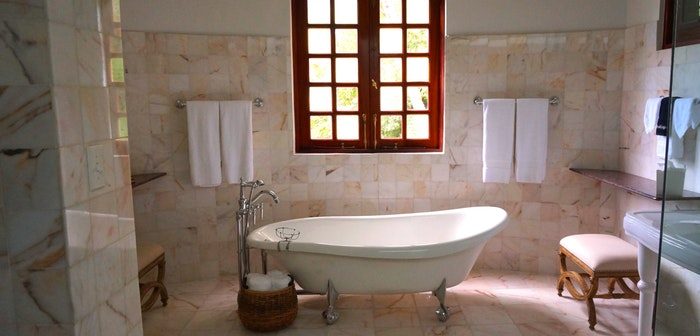The traditional beauty of the Victorian home has long been a staple influence on interior designers and decorators, and for good reason. The classic charm of the claw foot bath, panelled walls along with the majesty of Victorian fireplaces, all combine to imbue a home with warmth, elegance and style.
Whilst, not every home lends itself to a full Victorian makeover, all can benefit from a contemporary twist on the old classic.
Examples of this delicate balance can be found in homes built during the 1960’s to 1980’s – an era when, for the most part, style and beauty were lost to misguided concepts–where economy won out over taste. Incorporating Victorian styling into these homes can prove difficult and instead of timeless class, the rather heavy influence of some Victorian design can date them further.
Cherry picking
Many modern homes now have architectural touches which give a nod to the traditional features of bygone days. By selective design choices, these can be complemented and enhanced to emulate the beauty of the Victorian home.
Let’s take some of these features separately and how they can be simply and tastefully incorporated into the modern home.
Feature Furnishings
A modern slant on the traditional dark and heavy Victorian furniture are to ‘upcycle’, where furniture is given a makeover to lift the colour (normally a version of white) whilst retaining the original features.
As can be seen in the picture above, furniture is also being repurposed into other fittings such as bathroom vanities.
A lighter view – window treatments
The classic swag curtains with pelmets can prove ‘heavy’ even in the most light-filled room. Consider instead the flexible beauty of shutters–both inside and outside the windows. Plantation shutters were used extensively in Victorian homes primarily on the outside when wall became thinner and people could reach them to block out the elements.
Wallpaper wizardry
Again, Victorian era wallpaper, whilst a glamorous and elegant feature, could make a room dark. By incorporating it into a feature wall rather than all four walls, the effect remains but not to an overwhelming extent.
Cooking up a classic
Unlike modern kitchens, the Victorian kitchen was rarely seen by guests so was typically spartan. However, by introducing a modern twist to the original features and design, a contemporary classic can be formed. Simply through the addition of sympathetic amenities including:
- Butler’s pantry
- Aga stove
- Period tiling
- Recessed sink with stunning traditional hardware
- Tongue and groove walls.
Picturesque panelling
Wood panelling or wainscoting originate from as far back as the 1500’s but was extensively used in Victorian homes. It was first designed to hide rising damp in poorly constructed homes but went on gain favour as an architectural feature.
For those looking to invest in proper panelling, it can be constructed of tongue and groove board, beadboard or decorative panels. For those just keen on the effect without the financial outlay, there are a number of companies selling panel effect wallpaper which, with the addition of a dado rail can still make quite a statement.
Light work
Victorian-era lighting was often paraffin lamps, suspended from a ceiling. Electric fittings which emulate this style are perfect for a dining room, hanging low over a table. By combining modern downlights with choice pieces including chandeliers in select areas of the home, they can enhance the ambience of a home without dating it.
Bathroom brilliance
Unlike their original cousins, the modern claw foot bath comes in smaller, lighter varieties to accommodate the changing size of the modern bathroom. Victorian tiles were often the monochrome or black and white in the bathroom, unlike other rooms of the home where they were intricately ornate.
Many bathrooms incorporated panelling up the walls, again it can be assumed, hide the evidence of rising damp. Tongue and groove board combined with a dado rail, can simply and economically recreate the same delightful effect.
There are so many wonderfully easy ways to incorporate touches of old English elegance into your home–adding style, charm and warmth. Be inspired today!




